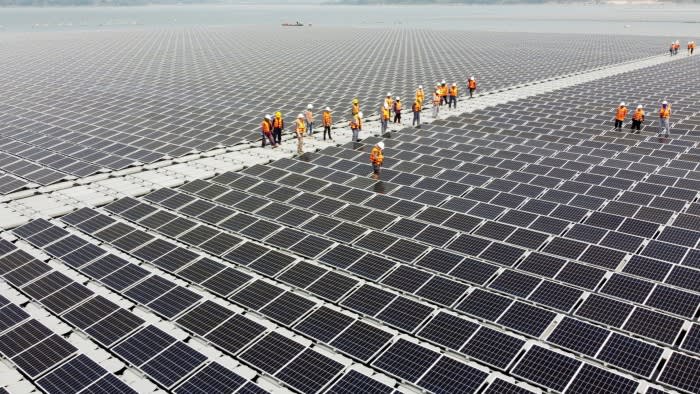Oil prices are under pressure as bearish sentiment grows as OPEC+ undercuts the market with its commitment to extend its voluntary cuts until the third quarter of 2024 and baseline cuts until the end of 2025.
– Combining an in-person meeting in Riyadh with a hybrid online option for smaller producers, OPEC+ agreed to extend existing production cuts into next year, while paving the way for the gradual lifting of most curbs.
– The latest round of voluntary production cuts agreed in November 2023 is due to be phased out over a 12-month period, raising the joint OPEC+ target to 36.27 million b/d, more than 2 million b/d above current output.
– The UAE was the big winner of the OPEC+ meeting, after securing another increase in its official production quota, allowing it to increase output by 300,000 b/d several steps over 2025.
– Although Saudi Energy Minister Prince Abdulaziz bin Salman claimed that OPEC+ has a choice to pause or even reverse the upcoming relaxations, the market as a whole saw this as a sign of higher supply in a period of uncertain demand.
Market drivers
– The shipping arm of ADNOC, the UAE’s national oil company, has agreed to buy UK-based shipowner Navig8 for $1.5 billion, taking over a fleet of 32 tankers and the management of six shipping pools.
– American midstream mainstream Energy Transmission (NYSE:ET) has agreed to buy Midland-focused pipeline operator WTG Midstream in a deal valued at $3.25 billion, including a $2.45 billion cash payment.
– Japan’s largest gas supplier Tokyo Gas (TYO:9531) is looking to invest in US natural gas assets, building on its recent purchase of Rockcliff Energy for $2.7 billion and a 49% stake in trading company ARM Energy.
Tuesday, June 4, 2024
The OPEC+ meeting over the weekend extended voluntary production cuts into the third quarter of 2024 and the original cuts of 3.66 million bpd until the end of 2025. That pledge was not enough to convince market participants that the future of oil was bright, with Brent losing almost $3 per barrel in just one trading day and slipping below the $77 per barrel mark. With the promise that more supply will return to the market in 2025, the list of growth factors has been reduced to a minimum.
OPEC+ extends voluntary production cuts to Q3. Quickly organizing an in-person meeting in Riyadh, OPEC+ members agreed to extend voluntary cuts of 2.2 million b/d until the third quarter of 2024, while also charting a course to gradually ease remaining cuts through 2025.
Norway standoff sends European gas to 2024 highs Future gas prices for the European TTF jumped to the highest level this year so far, at €37 per MWh, after Equinor’s (NYSE:EQNR) the offshore Sleipner hub stopped operations due to a crack, which also led to the closure of the Nyhamna processing plant.
National strike paralyzes Nigerian industry. Nigeria’s main labor unions have shut down the country’s electricity grid and grounded flights across the country as they demand a 1,500% increase in the minimum wage amid unprecedented inflation that has so far spared the country’s oil production.
Hedge funds return to oil speculation. After six straight weeks of reducing their positions, portfolio investors increased their net long holdings in six major oil futures and options in the week ended May 28, mostly by closing their short contracts ahead of the OPEC+ meeting.
South Korea may have found oil. One of the world’s most import-dependent countries, South Korea has approved exploratory drilling for potentially huge oil and gas reserves off the country’s east coast, with KNOC leading an estimate that could unearth as much as 14 billion boe.
The exodus of major oil companies from the UK North Sea continues. Global oil companies Shell (LON:SHEL) and ExxonMobil (NYSE:XOM) are closing in on an agreement with UK independent producer Viaro Energy to sell their joint gas fields in the southern North Sea for $0.5 billion, ending Exxon’s 60-year presence in the country.
Indonesia delays ban on copper concentrate exports. Indonesia, one of the world’s largest copper producers, has delayed the start of a ban on exports of its copper concentrate until the end of 2024 due to delays in the construction of smelters, which could lead to a drop in copper prices until the summer.
The US continues to buy oil for the SPR. The US Energy Department continued to buy 3 million barrels of oil for the country’s Strategic Petroleum Reserve, buying at an average price of $77.69 a barrel for delivery in November, bringing the total purchased to 38.6 million barrels.
Sheinbaum’s big win worries the Mexican oil industry. A landslide victory for Mexican President-elect Claudia Sheinbaum will allow the ruling party to officially dismantle the 2013 energy market liberalization by changing the constitution, limiting future growth in the country’s oil production.
Heat waves in India increase gas consumption. While heat waves across India claimed dozens of lives, the country’s natural gas-fired power generation rose to record levels in May, nearly doubling from last year to 4.7 million KWh, while coal still accounts for 75% of generation capacity.
China’s emissions rules to curb fuel demand. By the end of 2025, Beijing should mandate a 5% reduction in carbon intensity compared to 2020 levels, by removing restrictions on the purchase of cars that do not use fossil fuels and encouraging the electrification of industrial vehicles, limiting the growth in demand for gasoline and diesel.
An American oil company is suing Venezuela in court. A court in Trinidad and Tobago granted the US oil companies ConocoPhillips (NYSE:COP) the right to collect on a $1.33 billion claim against Venezuela for the appropriation of its oil and gas assets, potentially derailing the development of offshore gas fields such as Dragon or Cocuina-Manakin.
Australia’s LNG is coming into force again. American energy major Chevron (NYSE:CVX) resumed LNG production at its Gorgon liquefaction facility on Australia’s Barrow Island after a mechanical failure caused a month-long shutdown, restoring production capacity of 5.2 mtpa.
Michael Kern for Oilprice.com
More popular articles from Oilprice.com:


